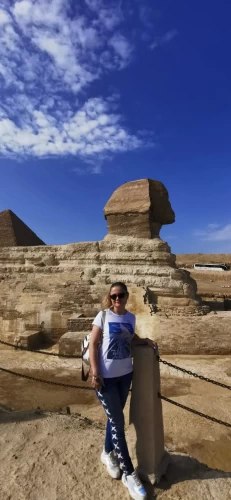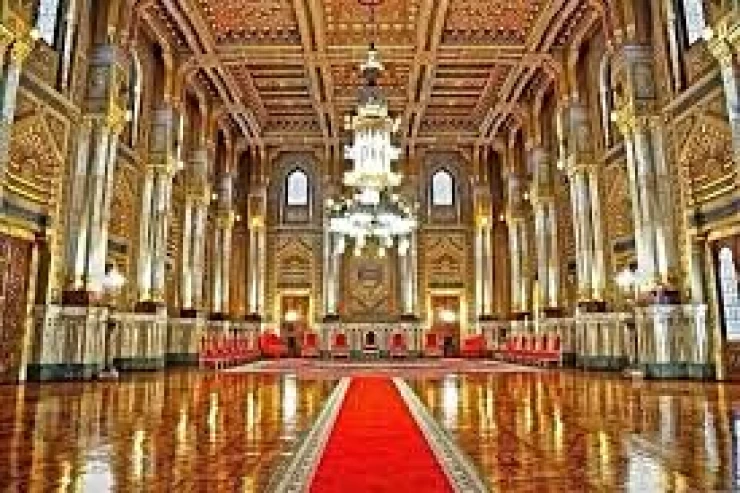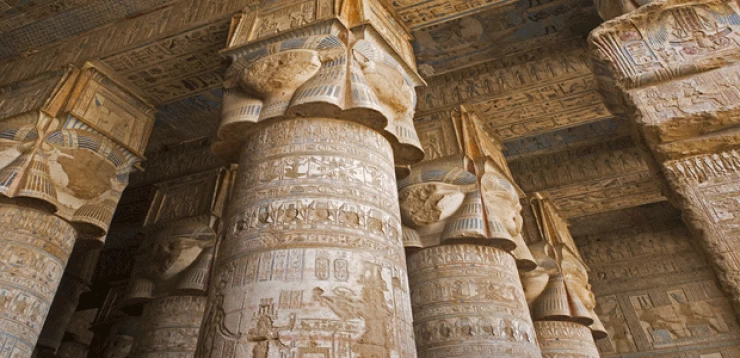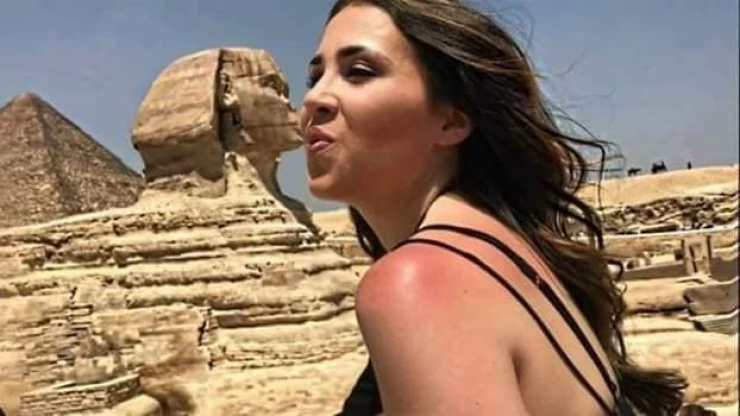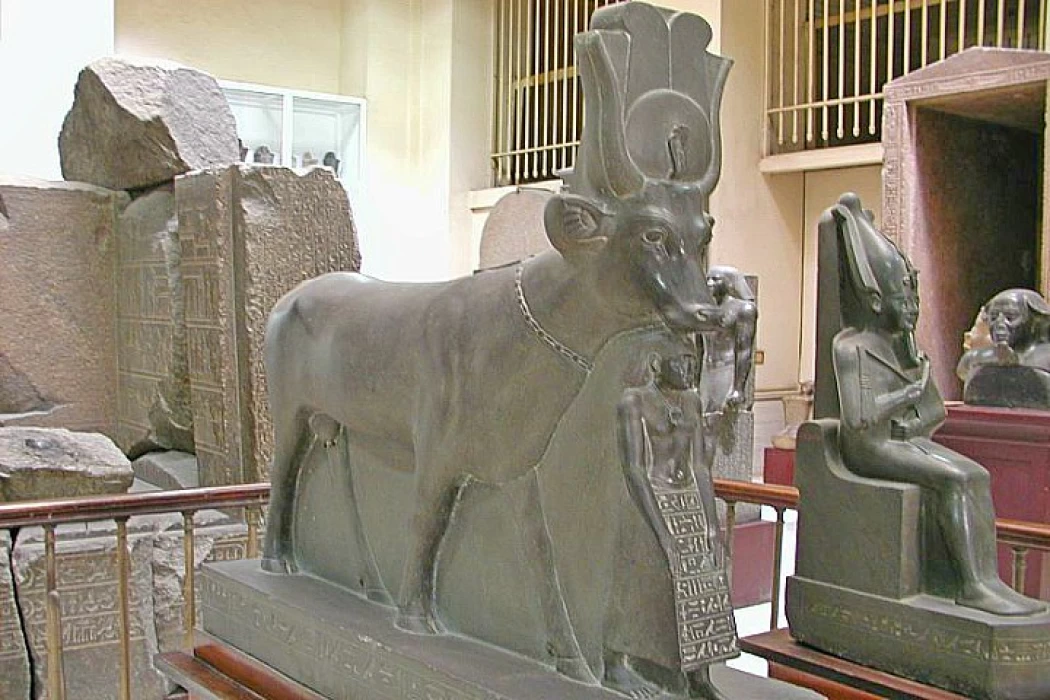
Dea Hathor | Dea della fertilità, dell'amore e della maternità
Dea Hathor
La dea Hathor, nell'antica religione egizia, era la dea della gioia, della bellezza, della musica, della danza, della poesia e dell'amore. Lo strumento sacro di Hathor era il sistro.
Dea della fertilità, dell'amore e della maternità
Come in molte altre religioni antiche, la dea dell'amore è anche la dea della morte (Venere, Libitina, Astarte, ecc.). Così Hathor assume, per ordine del dio Amon Ra, l'aspetto mortale della leonessa Sekhmet nel mito della distruzione dell'umanità.
Ptolemy Philopator ha consacrato la necropoli di Deir el-Medina per Hathor. La dea era anche venerata ad Afroditopoli settentrionale, Apollinofolio Magne e El-Deir El-Bahri. È stata identificata in Kadesh, la sposa di Reshep, una divinità asiatica che ha anche patrocinato l'amore e la morte. Era anche considerata la moglie di Dio Sobek nella triade divina adorata a Kom Ombo.
Viaggia in Egitto per visitare i templi e le piramidi egizie per saperne di più sulla mitologia e sulle centinaia di divinità adorate dai Faraoni che erano molto simili agli esseri umani che amavano e odiavano, si sentivano gelosi e combattevano e morirono durante un incredibile mito pieno di gioia, eventi drammatici e d'azione che hanno ispirato registi e produttori cinematografici moderni a creare film di fama mondiale sulla grandezza dei Faraoni e degli Dei che adoravano. Trascorri alcuni giorni a visitare Abydos, Giza, Luxor, Assuan per vedere le tombe dei Faraoni adornate con scene molto chiare, dettagliate e splendidamente dipinte delle varie divinità dell'antico Egitto e molti altri siti
Se hai intenzione di visitare l'Egitto, dovresti considerare di rivedere la nostra dettagliata guida di viaggio in Egitto, poiché è un'esperienza davvero unica durante i tour in Egitto che non è paragonabile a nessun'altra cosa da fare in Egitto. Puoi goderti uno dei tour classici in Egitto, che tutti i viaggiatori vorrebbero fare in crociera sul fiume Nilo durante i tour di Natale in Egitto o durante il miglior tempo durante i tour di Pasqua in Egitto. Coprendo la maggior parte delle gite di un giorno al Cairo, tour di un giorno a Luxor oltre alle escursioni ad Assuan, ecco perché la nostra sezione di informazioni di viaggio è pensata per essere utile prima di procedere con i migliori tour dell'Egitto per coloro che cercano cultura, storia dell'Egitto e alloggi di lusso durante la navigazione sul Nilo Valle.
Il nostro team vi aiuterà a viaggiare in Egitto e sperimentare il tempo soleggiato del nostro bel paese durante la Pasqua 2024, grazie alla loro vasta conoscenza del turismo egiziano. Puoi personalizzare il tuo pacchetto selezionando uno dei nostri pacchetti di viaggio in Egitto o sfruttare al massimo il tuo tempo in una breve visita, imparando di più sulla storia egiziana e le sue affascinanti storie e vivendola attraverso tour privati al Cairo. Partecipa a uno dei nostri tour economici in Egitto attraverso il deserto del Sahara, come i tour di Siwa dal Cairo, per esempio, o preferibilmente i tour nel Deserto Bianco d'Egitto. Scoprite i nostri tour di un giorno ad Assuan, fate una gita di un giorno da Assuan ad Abu Simbel, o viaggiate via terra e godetevi i nostri tour di un giorno a Luxor per vedere gli incredibili templi di Karnak, il Tempio di Luxor, il Tempio di Hatshepsut, e vedete le meravigliose tombe splendidamente dipinte nella Valle dei Re, questo è il luogo dove i re e i governanti del nuovo regno riposano in pace e imparate i loro riti di mummificazione e sepoltura.
In the Ancient Egyptian religion, Goddess Hathor was the goddess of joy, beauty, music, dance, poetry, and love. The sacred instrument of Hathor was the sistrum.
She is one of the ancient Egyptian gods. The goddess Hathor was one of the most important and famous Egyptian deities, and even one of the most widespread ever. Some believe that its worship appeared since prehistoric times, while others believe that it appeared since the beginning of the Old Kingdom, on the basis that evidence dating back to prehistoric times and the beginning of the dynasties does not confirm the lineage of Hathor.
As in many other ancient religions, the goddess of love is also the goddess of death (Venus, Libitina, Astarte, etc.). Thus Hathor assumes, by order of God Amun Ra, the deadly aspect of the lioness Sekhmet in the myth of the destruction of mankind.
Widely regarded as the Goddess of Joy, Music, Dance, and Love, Hathor was the personification of beauty, extending her influence through all forms of art to expression. The sistrum—an ancient Egyptian percussion instrument—is revered as her sacred symbol. In ceremonial environments, Hathor worship usually entailed music and dance to indicate her mastery over pleasure and enjoyment. The goddess was a common invocation for women with regard to love, fertility, or protection, as her blessings were believed to nurture and protect both personal and social well-being.
In the fabric of Egyptian mythology, Hathor appears as a symbol of joy and motherhood. She is loved throughout the Nile Valley, and wears many symbolic crowns. She is a nanny and a symbol of femininity. As the goddess of music and dance, her influence moves both heart and body. Its presence in temples and art still exists, revealing its revered role in ancient Egypt.
Like many ancient gods, Hathor also ruled the dead, a particular complement in her complex duality. This dark aspect of her was a deadly lioness, Sekhmet in other words, as her myth enacts: the destruction of mankind. In this myth, Hathor was commanded by god Amun Ra to turn into Sekhmet and punish humanity for disobedience. Therefore, her tale indicates Hathor's duality: a nurturing goddess of life and love and a fierce, destructive one when the equilibrium of the cosmos was disturbed.
Hathor is the house or sanctuary of Horus, according to its interpretation. She is the one who gave birth to the orphan Horus, son of Isis, and breastfed him. Thus, she became a mother to him and to all of nature, as she is a symbol of heaven. Then they made her a shepherd of the dead and settled her soul in the sycamore trees planted near their graves. Then they made her emerge from the branches as a body that sends water and waters the thirsty who have fallen asleep in the pens of death. They imagined that she sometimes roams the desert west of the Nile in the form of a lioness to protect the graves there.
As for the religious rituals and rites held for her, they were most likely established around the Fourth Dynasty, and there is evidence of the presence of male and female priests in many of her places of worship since the Fourth Dynasty at the very least.
Because of her connection to motherhood, then to the god "Ra" and kingship as the mother of the god "Horus", the king, and the daughter of the god "Ra", since the doctrine of the sun became of great importance, she had a relationship with royal rituals and beliefs.
Based on all of the above, her worship expanded to include all of Egypt, and her images and places of worship multiplied in a way that made it difficult to determine her main center of worship; although the most important of these centers was during the Old Kingdom, and perhaps the oldest of them is "Dendera", the capital of the sixth region of Upper Egypt, through which she moved and her worship dominated the neighboring seventh region.
The worship of Hathor stretched throughout Egypt and even beyond her frontiers, and this alone proved her latter-day importance to the religious world of the ancient days. During that era, Sacred City Deir el-Medina was made a shrine of Hathor by Ptolemy Philopator. This necropolis housed the tombs of workers who built the royal ones in the Valley of the Kings and became a prime place of worship of Hathor.
Hathor was known in many forms of worship as the great sky goddess, goddess of love, dance and drink, goddess of the dead, patroness of kingship, and mistress of foreign lands. She was considered a deity of universal nature; therefore, her relationships with many deities were diverse and varied.
She was associated with the sky and the heavenly Horus, and was described as the "Lady of the Sky" and the "Lady of the Stars" as the daughter of the god "Ra". She was associated with both "Isis" and "Osiris", and all the other deities in the form of the cow, and other relationships that are too numerous to list.







